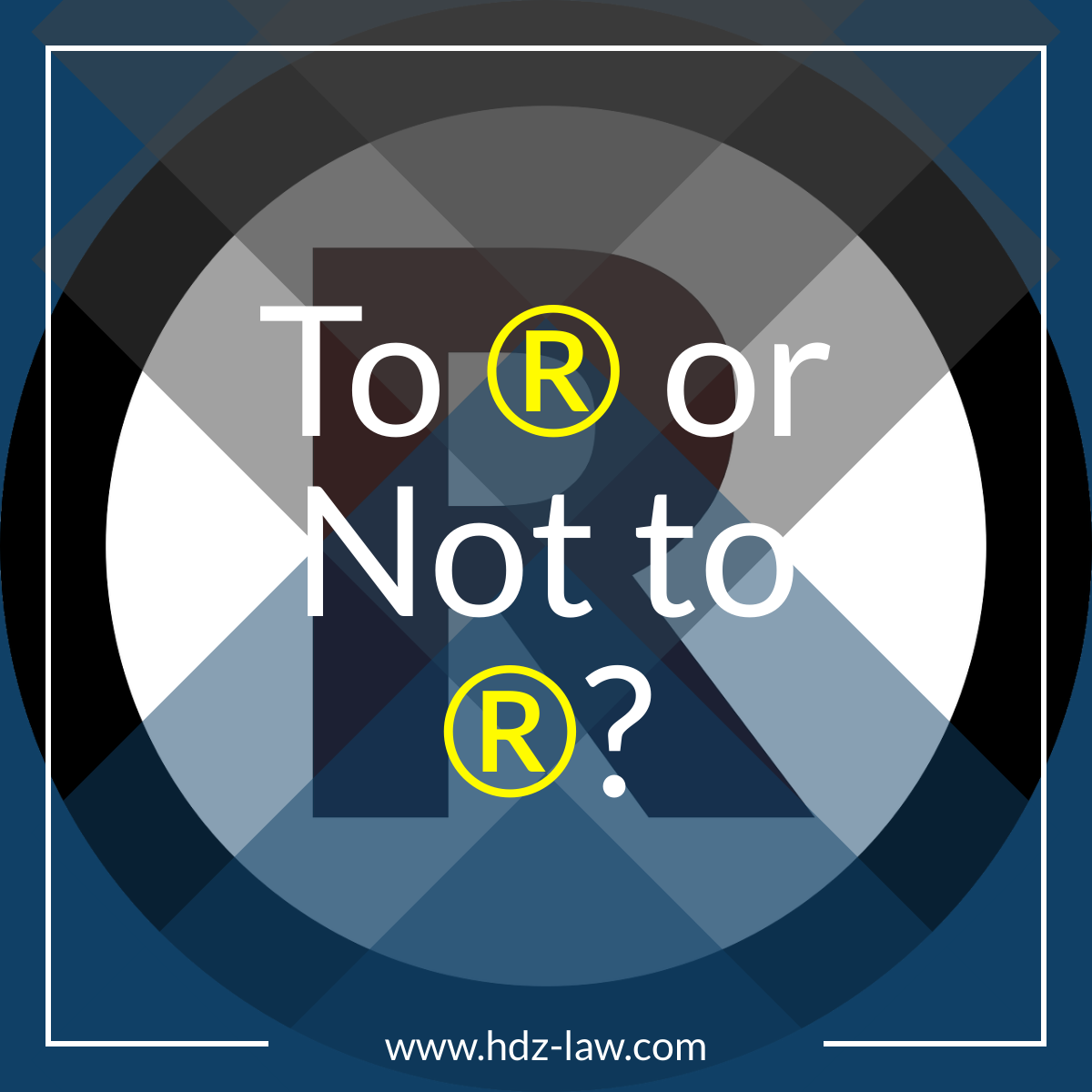
To ® or Not to ®?
Green Bay Packers. Apple. Amazon. Each of these names are trademarks and/or service marks (collectively referred to as “Marks”) known not only in the United States, but all over the world. But what is a Mark? Why is it important to have one? When should you as a business owner think about securing your own? We see Marks every day and yet the process to register and understand a Mark’s importance is far less known and recognized.
A Mark can be a word, phrase, symbol, design, image, color, or sound that are used to uniquely identify the source of a good or service and distinguish them from the goods or services of others. So why is this important to you and what can it do for your business? There are a variety of reasons that business owners choose to file a Mark with the United States Patent and Trademark Office (“USPTO”), including without limitation, to protect the name of their company or a slogan they use to stand out from the competition. What would Nike be without their famous name, that iconic swoosh, or the slogan “JUST DO IT”? A Mark allows you to protect your brand of goods and services, and protection is more important than ever given the sales and information on the internet regarding goods and services. A Mark creates a unique identifier for your good or service, allowing you to increase your business’s goodwill and protect your business from others for damages you may suffer if they try to use your Mark and cause confusion for consumers for their own personal gain. A ®, a designation used next to your Mark once it is registered with the USPTO, helps ensure to the consumer that are receiving the good or service they intended.
So how do you register a Mark? First, you need to determine whether the Mark you are looking to register is available. The success of your registration and protection of your Mark is based on both the use and priority of the Mark. The first party to utilize a Mark in commerce has first rights in that market versus subsequent users of the same or similar Marks. Therefore, in order to evaluate whether your Mark will successfully be registered, it is important to run a search (“Mark Search”) to see if there are any third parties using the Mark within the same field of goods or services and determine who has priority based on first use and the registered filing of the Mark with the USPTO.
It is important to determine the strength of the proposed Mark. The strength of a Mark is measured by the following categories from strongest to weakest:
- Fanciful – Made up words that have no meaning in the origin language.
- Arbitrary – Real words in the language, but these words have no meaning as applied to the applicable good/service.
- Suggestive – Made up of words that have components suggesting an aspect or aspects of the good or service.
- Descriptive – Describes an aspect of the good or service.
- Generic – Name the good or service that will be covered. These cannot be registered.
Once a Mark Search has been conducted and the strength of the Mark is measured, an application to register the Mark can then be filed with the USPTO to be reviewed prior to the Mark being fully registered.
However, after the Mark is registered, the process is far from over. For the life of the Mark, you need to not only maintain the Mark with the USPTO and continue to use the Mark in commerce, but you must also take control of policing and ensuring that others are not using the Mark without your permission.
It is important to note that while registering a Mark protects your specific good or service, the registration of the Mark does not mean that the Mark is protected in every category of a good and/or service. There are a total of 45 classes that cover all goods and services. You can only register your Mark in a class or classes that you actually use the Mark in. For example, if your company sells a specific good and files for a Mark under a class for that specific type of good, a different applicant may apply for a Mark with the same name under a different class as long as there would be no likelihood of confusion (i.e. a type of dipping sauce versus shoes).
Prior to taking the leap into registering a Mark, it is important to do the research, narrow down the class and determine the ability to register your Mark based on marks already used and registered by others. Since filing, maintaining and protecting a Mark is a significant long-term investment, it is important to consult an attorney knowledgeable about Marks in order to best assess your options and likelihood of a successful Mark registration.
For further questions about patents and trademarks contact Katrina at 920-430-1900.
